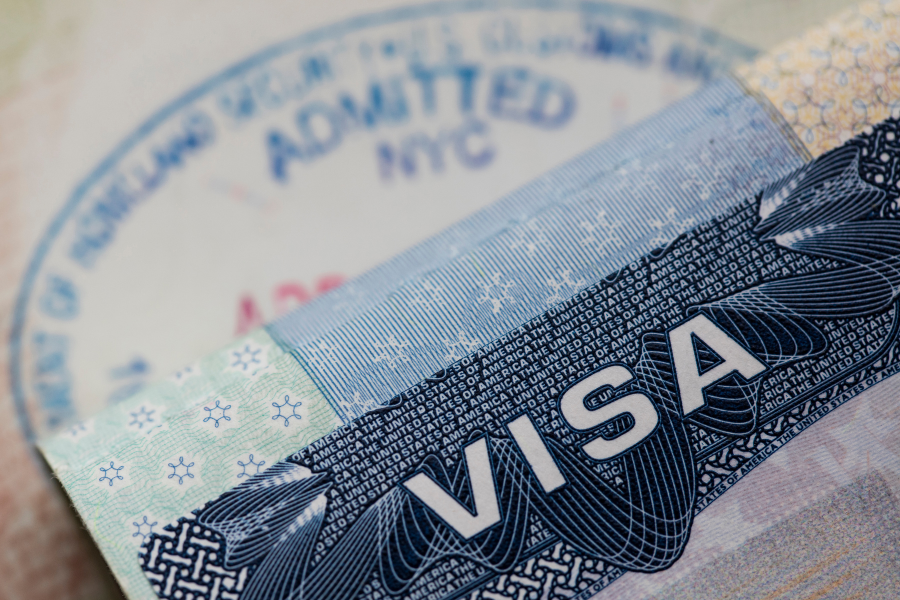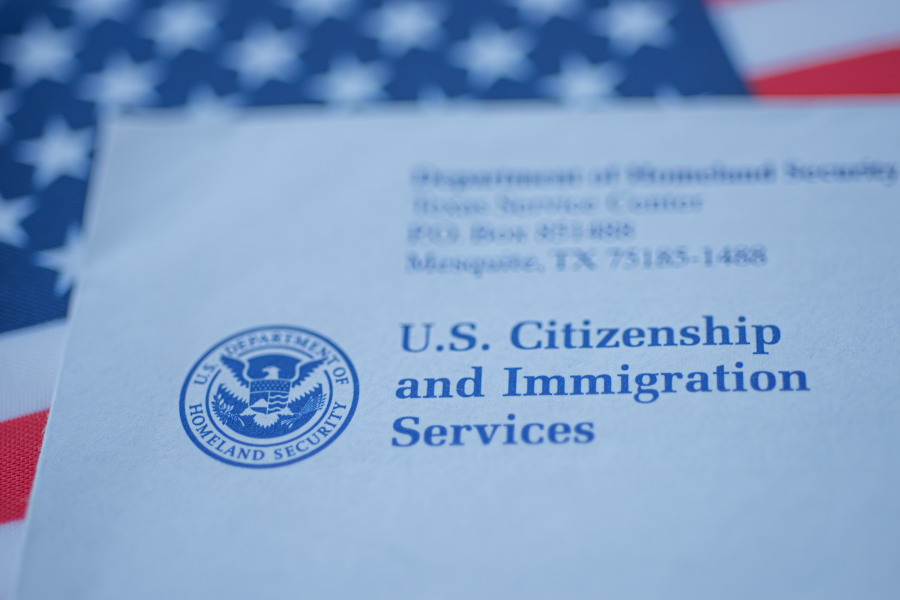Takeaways:
- Information for applicants present in the United States can be found at https://www.uscis.gov/
greencard/public-charge and information for applicants outside of the United States can be found at https://www.federalregister. gov/documents/2019/10/11/2019- 22399/visas-ineligibility- based-on-public-charge-grounds . The American Immigration Lawyer’s Association (AILA) has produced a chart for determining the effect of the Public Charge Grounds (Final Rule): https://www.aila.org/File/ Related/19050634be.pdf as well. - There are three forms now instead of just one: Form I-864, Affidavit of Support; Form I-944, Declaration of Self-Sufficiency; and the DS-5540, Public Charge Questionnaire.
- The government will look at Cash Assistance, Supplementary Security Income (SSI), Temporary Assistance for Needy Families (TANF), MEDICAID, Supplementary Nutrition Assistance Program (SNAP), Section 8 Housing.
- Receiving 12 months of benefits in 36 months may trigger public charge exclusion or removal.
- Benefits for household members, family, and military will likely not count against an applicant for establishing public charge.
- Because the government is now looking at a “totality of circumstances,” a prior finding of public charge, medical problems that may make someone dependent on benefits, insufficient employment history, or a history of benefits use may lead to a Public Charge Final Rule finding.
- Sponsor income and assets of more than 250% of the federal poverty guidelines, substantial income, assets, or work history by the foreign national, and health insurance that covers them in the United States will likely be treated as positive factors in deciding whether they are going to be a public charge.
Summary: New rules and regulations are rarely rolled out in a complete and final form. Consideration of what those changes mean may necessitate delay in offering a summary or assessment. A week since the implementation of the Public Charge Grounds (Final Rule) may not be too soon to offer a summary and assessment of its impact. Please note though that this piece is designed to equip the reader with a general understanding of the Public Charge Final Rule and an analysis useful to determining whether someone is likely to be excluded or removed as a public charge. Figuring out how the Public Charge Final Rule will affect particular people, given their circumstances, requires careful analysis. These materials do not constitute legal advice. Competent counsel is necessary to make such determinations.
As a general matter, foreign nationals who come to the United States or seek to do so must demonstrate that they will not require public benefits while they are here. People who require such benefits are said to be a “public charge” and the general rule barring them from coming to or remaining in the U.S. has been part of our immigration laws since the 1800s. However, public charge enforcement has not been consistent and is more or less strict depending on the economic and political climate. Foreign nationals who are likely to be a public charge are excludable and deportable but how that law is implemented is subject to the authority of the Executive Branch that the U.S. president oversees.
Since 1996, successive administrations have relied largely upon the information contained in the Form I-864, Affidavit of Support (“Affidavit of Support”) to determine whether a foreign national was, or was likely to become, a public charge. Affidavits of Support are filed by sponsoring family members and contain information about the sponsor’s income and assets. By filing the form, a sponsor promises that the person they are seeking status for (called the “beneficiary”) will not become a public charge.
Theoretically, if the beneficiary became a public charge, the government agency which extended benefits to them could recover the money from the sponsor. In practice though, the Affidavit of Support has not been enforced, primarily because it contains no specific enforcement provisions. Critics allege that, despite most foreign nationals being ineligible for such benefits, failure to enforce the Affidavit of Support has increased the number of people who receive public benefits.
In response to this claim, the Trump Administration has implemented new public charge rules, procedures, and forms; designed to strictly apply the public charge provisions of U.S. immigration law. These changes impact both the people who petition for foreign nationals to come to or remain in the United States and the beneficiaries themselves. With specific rules and guidelines that are being implemented by the U.S. Department of Homeland Security (DHS) domestically and the U.S. Department of State (DOS) abroad, a good understanding of how the so called “Public Charge Final Rule” applies to individual situations, both here in the US and when applying for a visa abroad, is essential.
Laws, Regulations, and Forms: While there are a number of laws and regulations which relate to the Public Charge Final Rule, the critical ones are:
- Immigration and Nationality Act (INA), Section 212(a)(4) and (a)(5);
- INA, Section 213;
- INA, Section 214(a)(1);
- INA, Section 237(a)(5); and
- Foreign Affairs Manual (FAM) 302.8-2(B)(3) – (7) and 302.8-2 (D)(1) and (D)(2).
USCIS has provided an extensive explanation of the Public Charge Final Rule and its implementation as well: https://www.uscis.gov/
The relevant forms are:
- USCIS Affidavit of Support Information: https://www.uscis.gov/
greencard/affidavit-support - USCIS Declaration of Self-Sufficiency Information: https://www.uscis.gov/i-944
- DOS Public Charge Questionnaire: https://eforms.state.gov/
Forms/ds5540.PDF.
Effective Date: The Public Charge Final Rule became effective on February 24, 2020 and it affects all Adjustment of Status and nonimmigrant visa filings here in the U.S, postmarked on or after February 24, 2020, as well as all pending and future filings abroad.
Who is subject to the Public Charge Final Rule: Intending immigrants who are filing for a visa abroad or for Adjustment of Status in the United States are subject to the rule, as well as nonimmigrant visa applicants overseas and nonimmigrants seeking an extension of stay or a change of status.
Who is NOT subject to the Public Charge Final Rule:
- U.S. citizens, even if they are related to a noncitizen who is subject to the rule; or
- Foreign nationals exempt from the public charge ground of inadmissibility, such as:
o Refugees and Asylees;
o Afghans and Iraqis with special immigrant visas;
o Nonimmigrant trafficking and crime victims;
o Violence Against Women Act (VAWA) applicants;
o Special Immigrant Juveniles (SIJ); and
o Those granted a waiver of public charge inadmissibility.
What about benefits received before February 24, 2020 (the Effective Date): Benefits which are subject to the Public Charge Final Rule but were NOT considered public charge evidence before will not be a negative factor for determining public charge but those which WERE subject to exclusion under the prior guidance (1999 Field Guidance on Deportability and Inadmissibility on Public Charge Grounds) AND were received within the thirty-six (36) months prior to the February 24, 2020 Effective Date will be negative factors in Public Charge Final Rule analyses.
Receipt of these benefits after February 23, 2017 will likely be used as an adverse factor in determining public charge because they are listed in the 1999 field guidance:
- Cash “General” Assistance;
- Supplementary Security Income (SSI);
- CASH Temporary Assistance for Needy Families (TANF); and
- MEDICAID – If used to cover institutionalized long-term care.
Receipt of these benefits before February 24, 2020 will likely NOT be an adverse factor in determining public charge because they are NOT listed in the 1999 field guidance:
- Supplemental Nutrition Assistance Program (“SNAP,” formerly called “Food Stamps”);
- Section 8 Housing Assistance under the Housing Choice Voucher Program;
- Section 8 Project-Based Rental Assistance (including Moderate Rehabilitation);
- Public Housing under section 9 the Housing Act of 1937, 42 U.S.C. 1437 et seq; and
- Most forms of federally funded Medicaid.
What benefits likely WILL trigger a public charge exclusion or removal:
The Department of Homeland Security (DHS) will only look at benefits received directly by the applicant for their own benefit or for which the applicant is listed as a beneficiary of public benefits. This includes:
- Any federal, state, local or tribal cash assistance for income maintenance:
- Supplemental Security Income (SSI);
- Temporary Assistance for Needy Families (TANF); and
- Cash “General” Assistance.
- Supplemental Nutrition Assistance Program (SNAP);
- Section 8 Housing Assistance;
- Section 8 Project-Based Rental Assistance;
- Section 9 Public Housing; and
- Most forms of federally funded Medicaid.
What amount or duration of benefits is likely to trigger a public charge exclusion or removal:
There is no specific amount of time or monetary value which triggers public charge exclusion or removal. DHS and the U.S. Department of State (DOS) have adopted a “totality of the circumstances” approach which reviews positive and negative factors in determining whether to approve or deny an application or seek removal on public charge grounds. There are, however, some general rules which should be taken into account in determining whether to apply for or continue to receive public benefits.
The Public Charge Final Rule sets a time guideline of receiving twelve (12) months (in aggregate) of benefits within a thirty-six (36) month period as a negative factor. NOTE: Receiving more than one public benefit at a time is “double-counted,” meaning one month of use equals two months of aggregate benefits. For example, if someone received six months of SSI and TANF, they would have used up twelve months of aggregate benefits in that six months.
What benefits will likely NOT trigger a public charge exclusion or removal:
MEDICAID: DHS will NOT consider:
· Medicaid for the treatment of an emergency medical condition;
· Medicaid services or benefits provided under the Individuals with Disabilities Education Act;
· School-based services or benefits provided to individuals who are at or below the oldest age eligible for secondary education, as determined under state or local law;
· Medicaid benefits received by someone under 21 years of age; or
· Medicaid benefits received by pregnant women or for the 60-day period beginning on the last day of the pregnancy.
GUARDIANSHIP: DHS will NOT consider public benefits received on behalf of someone for whom they have guardianship or power of attorney for.
HOUSEHOLDS: DHS will NOT “attribute receipt of a public benefit” by household members to the applicant unless the applicant is also a beneficiary.
CHILDREN: Benefits for children, natural or adopted, of an applicant who become U.S. citizens or enter the U.S. to attend a citizenship interview will not be counted under the Public Charge Final Rule.
U.S. MILITARY: If the foreign national was enlisted in the U.S. armed forces or serving in active duty while a reservist, when the benefits were received by them or their family members, those benefits will not count against the service member under the Public Charge Final Rule.
ADOPTIONS: Benefits paid to children born to or adopted by U.S. Citizens living abroad will not be counted under the Public Charge Final Rule.
What factors will likely trigger an inquiry into public charge exclusion or removal:
- A prior finding that the person is inadmissible or deportable as a public charge by DOS or the Executive Office for Immigration Review (EOIR);
- Medical conditions which require extensive treatment or institutionalization or which interfere with the ability to provide for themselves, go to school, or work AND they are uninsured and unlikely to be able to pay for treatment;
- The person isn’t a full-time student and is authorized to work but can’t demonstrate present employment, recent employment, or a reasonable prospect of future employment; and
- The person has received one or more benefit types for more than six months (aggregate) within thirty-six months, beginning February 24, 2017.
What factors will DHS treat favorably in determining whether a public charge exclusion or removal is appropriate?
· A sponsor’s household income, assets, or resources and support from a sponsor is at least 250% of the Federal Poverty Guidelines for the beneficiary’s household size;
· The beneficiary is authorized to work and employed in a job with an annual income of at least 250% of the Federal Poverty Guidelines for their household size; and
· The beneficiary has health insurance, not subsidized under the Patient Protection and Affordable Care Act, that will cover them for their stay in the U.S.
What about DOS? Are there particular factors which will weigh for or against an applicant in determining public charge: One of the ways that the U.S. Department of State’s public charge approach overseas is different than the U.S. Department of Homeland Security’s approach stateside is that the DOS Foreign Affairs Manual does not contain positive and negative factors the way that DHS’ regulations do. While DOS and DHS apply a “totality” test which weighs positive and negative factors, DOS doesn’t have a specific list of factors and how they fit into the analysis.
It may be that the DS-5540, Public Charge Questionnaire itself provides the best indication of what factors are weighed in DOS’ analysis. The form focuses on:
- Applicant health and insurance;
- Household size;
- Financial resources and income, including income and assets of household members;
- Debts;
- Public benefits;
- Employment records and/or employment offers;
- Educational degrees and certificates; and
- Specialized job skills and work history.
Additionally, DOS seems to be also looking at:
- Immigrant Intent – Nonimmigrants seem to get more attention than immigrants, perhaps because immigrants frequently have a petitioner/sponsor;
- The Affidavit of Support – Properly executed and supported, may be a positive factor; and
- Age and health – DOS seems to be looking at expected income potential and income history to determine likelihood to become a public charge;
Conclusion: The “Totality of the Circumstances” test applied by the U.S. Department of Homeland Security in the U.S. and by the U.S. Department of State abroad gives federal officers wide latitude in determining public charge. Whether a particular factor will weigh more or less heavily in the analysis will become more evident the farther from the February 24, 2020 implementation but experienced immigration attorneys are in a particularly good place to take educated guesses at how individual circumstances will affect public charge determination.
Because each case has to be analyzed on its own merits, this piece should not be treated as legal advice. Proper analysis requires careful consideration of individual factors and those who may be subject to a public charge finding should seek the advice of competent counsel. Green and Spiegel is a full-service immigration law firm with the resources and expertise to help clients with complex matters like this. Please contact us at info@gands-us.com if we can be of service.




